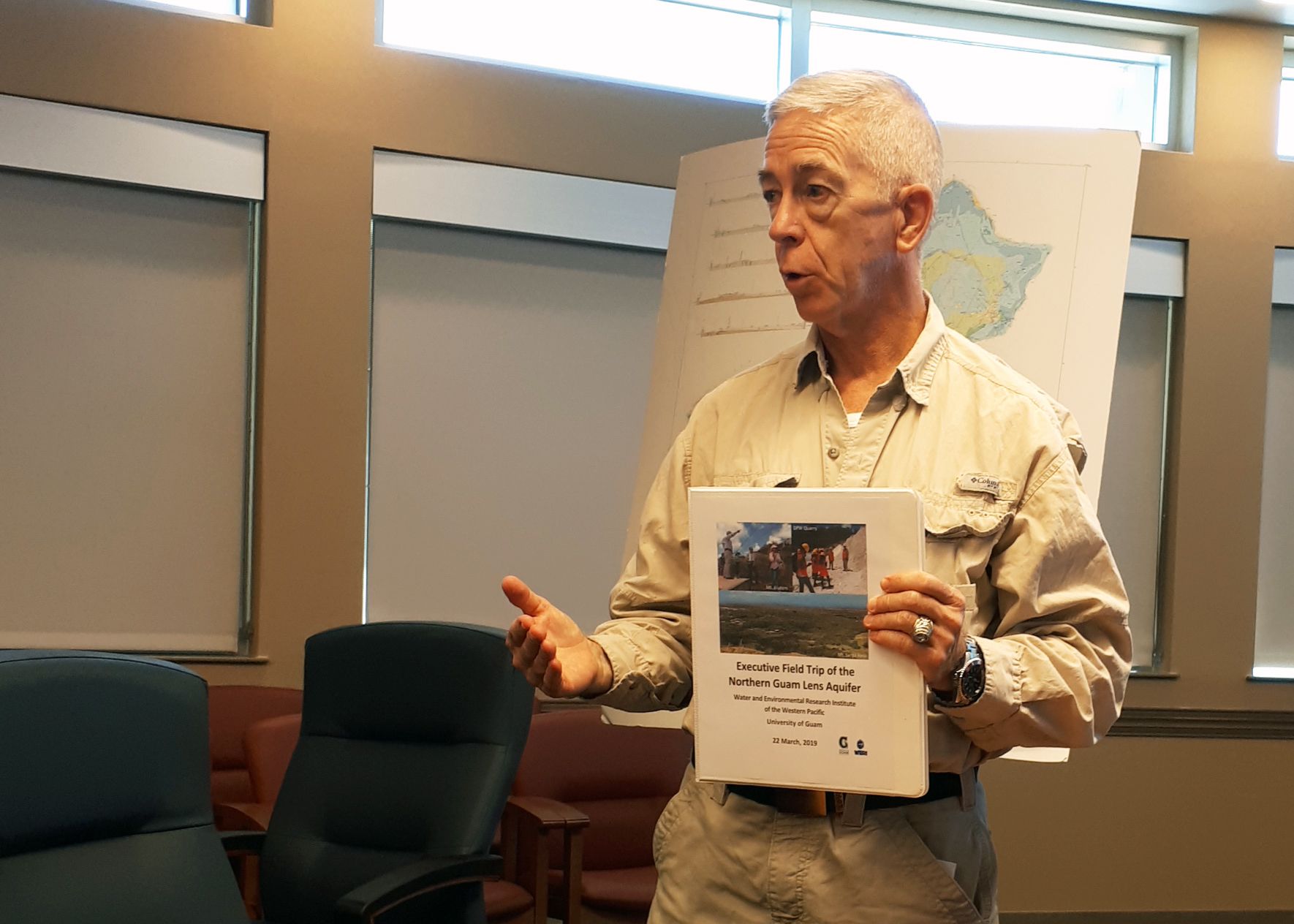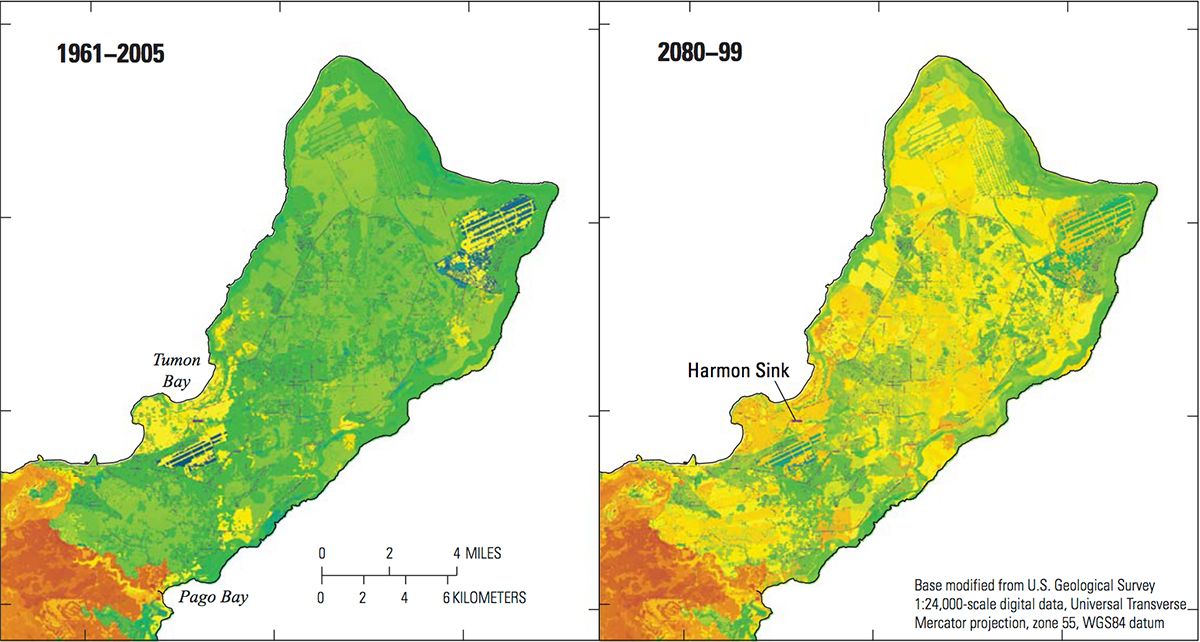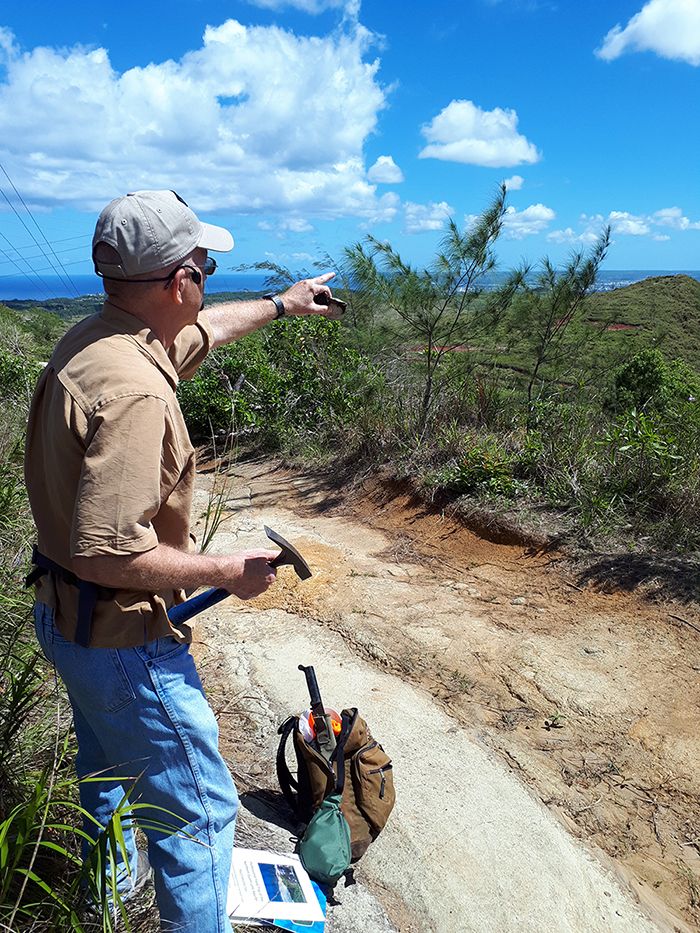WERI research informs study on Guam's future freshwater availability
WERI research informs study on Guam's future freshwater availability
WERI research informs study on Guam's future freshwater availability
10/24/2019

If current climate conditions persist, Guam’s water resources are projected to diminish by 2080 due to an increase in average temperature and decrease in average rainfall.
This was the prediction that came out of a federally funded U.S. Geological Survey study published on Sept. 30 that evaluates water resources on the island’s U.S. Department of Defense installations to determine how climate change and sea-level rise will affect freshwater availability.
The University of Guam, through the research of John W. Jenson, director of UOG’s Water and Environmental Research Institute of the Western Pacific and professor of hydrogeology, was a key contributor of the report along with U.S. Geological Survey’s Pacific Islands Water Science Center, the University of Hawai'i, The University of Texas, and the East-West Center.

Maps showing the distribution of mean annual groundwater recharge estimated for the
Northern Guam Lens Aquifer for historic and future climate conditions. Image from
U.S. Geological Survey report "Water Resources on Guam - Potential Impacts of and
Adaptive Response to Climate Change," Sept. 30, 2019.
The study examines Guam’s main freshwater resources — the Northern Guam Lens Aquifer and the Fena Valley Reservoir — and their sources of intake, from streams to groundwater. Using Guam’s climate history and future climate conditions informed by global climate models, the study noted several key projections for the future period of 2080–2099:
- Increased average temperature on Guam of 5.8°F
- Decreased overall rainfall of 7%
- Decreased streamflow of 18% in some areas of Southern Guam
- Reduced groundwater recharge of the Northern Guam Lens Aquifer by 19%
- Decreased water availability from Fena Valley Reservoir but no water-level decrease at up to twice the 2018 demand rates

The downscaled climate models used in the study were funded by the UOG Pacific Islands Climate Adaptation Science Center, which also partially funded the report contributions made by Jenson and another a co-author.
“We are always willing to assist with critical research that can provide a glimpse of how Guam will be affected by a changing climate and sea-level rise,” said Romina King, program director of the UOG Pacific Islands Climate Adaptation Science Center and vice chair of the Climate Change Resiliency Commission established this year by the governor. “We support actionable science to better inform policymakers, water resource managers, and natural managers so that Guam can better adapt to this global phenomenon.”
The study was initiated and funded primarily through the Strategic Environmental Research and Development Program of the U.S. Department of Defense.
The complete report and datasets detailing the projections and recommended courses of action can be found at https://pubs.er.usgs.gov/publication/sir20195095.
